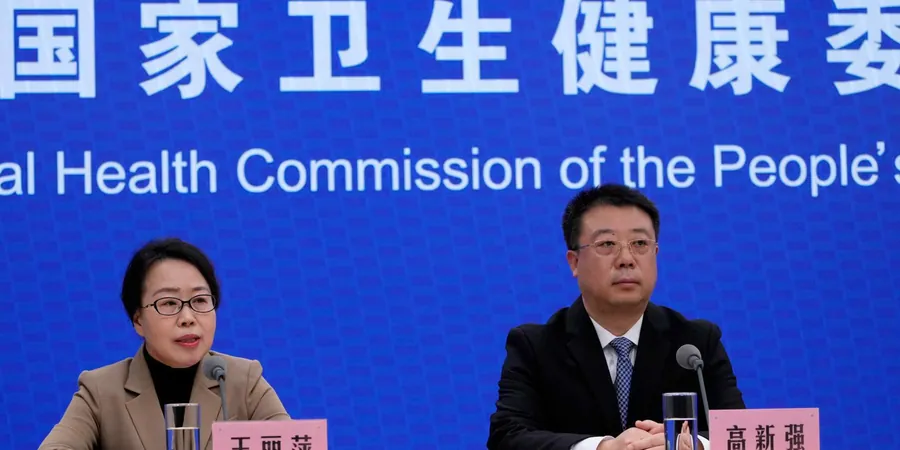
Decline in Human Metapneumovirus Infections in Northern China Sparks Relief Amid Pandemic Fears
2025-01-12
Author: Sarah
In a promising development for public health, health officials in northern China announced that the rate of infections caused by the flu-like human metapneumovirus (HMPV) is on the decline. This comes as concerns have risen internationally regarding the potential for a pandemic linked to this virus.
HMPV, which is related to the respiratory syncytial virus, typically presents with symptoms similar to the flu, including fever, cough, and nasal congestion. While symptoms generally resolve on their own, they can lead to more serious lower respiratory tract infections, particularly in vulnerable populations such as children, the elderly, and individuals with weakened immune systems.
Wang Liping, a researcher with the Chinese Center for Disease Control and Prevention, emphasized during a press briefing that HMPV is not a newcomer to human populations. "This virus has been circulating among humans for at least several decades," she stated. The surge in reported cases in recent years can largely be attributed to enhanced detection capabilities, rather than an actual increase in prevalence.
Encouragingly, Wang reported that the rate of positive HMPV cases has begun to fluctuate and is decreasing, especially among patients aged 14 and under. This decline has alleviated some fears following the circulation of alarming images showcasing hospitals in northern China filled with masked patients.
In response to rising concerns, the World Health Organization (WHO) clarified that it has not received credible reports of unusual outbreaks of HMPV within China or elsewhere. Experts reassure the public that, unlike COVID-19, HMPV has existed for a long time, and many individuals possess a degree of natural immunity. Most children will typically encounter this virus by age five.
Despite a rise in patients visiting fever clinics and emergency rooms, the overall numbers remain below those recorded during the same timeframe last year, according to Gao Xinqiang, the deputy director of the Department of Medical Emergency Response of the health commission. "We are well-prepared, and there is no evident shortage of medical resources," Gao noted.
As for current seasonal trends, flu infections across the nation are predicted to decline progressively by mid-to-late January, according to commission spokesperson Hu Qiangqiang. Notably, there are currently no vaccines or specific treatments available for HMPV. To minimize the risk of infection from HMPV and other respiratory illnesses, health experts recommend routine cleanliness, including hand washing, as well as avoiding crowded settings and wearing masks when in close proximity to others.
In a world still grappling with the consequences of COVID-19, the declining rates of HMPV infections provide a flicker of hope as health officials focus on preventive measures and the well-being of their communities.


 Brasil (PT)
Brasil (PT)
 Canada (EN)
Canada (EN)
 Chile (ES)
Chile (ES)
 Česko (CS)
Česko (CS)
 대한민국 (KO)
대한민국 (KO)
 España (ES)
España (ES)
 France (FR)
France (FR)
 Hong Kong (EN)
Hong Kong (EN)
 Italia (IT)
Italia (IT)
 日本 (JA)
日本 (JA)
 Magyarország (HU)
Magyarország (HU)
 Norge (NO)
Norge (NO)
 Polska (PL)
Polska (PL)
 Schweiz (DE)
Schweiz (DE)
 Singapore (EN)
Singapore (EN)
 Sverige (SV)
Sverige (SV)
 Suomi (FI)
Suomi (FI)
 Türkiye (TR)
Türkiye (TR)
 الإمارات العربية المتحدة (AR)
الإمارات العربية المتحدة (AR)